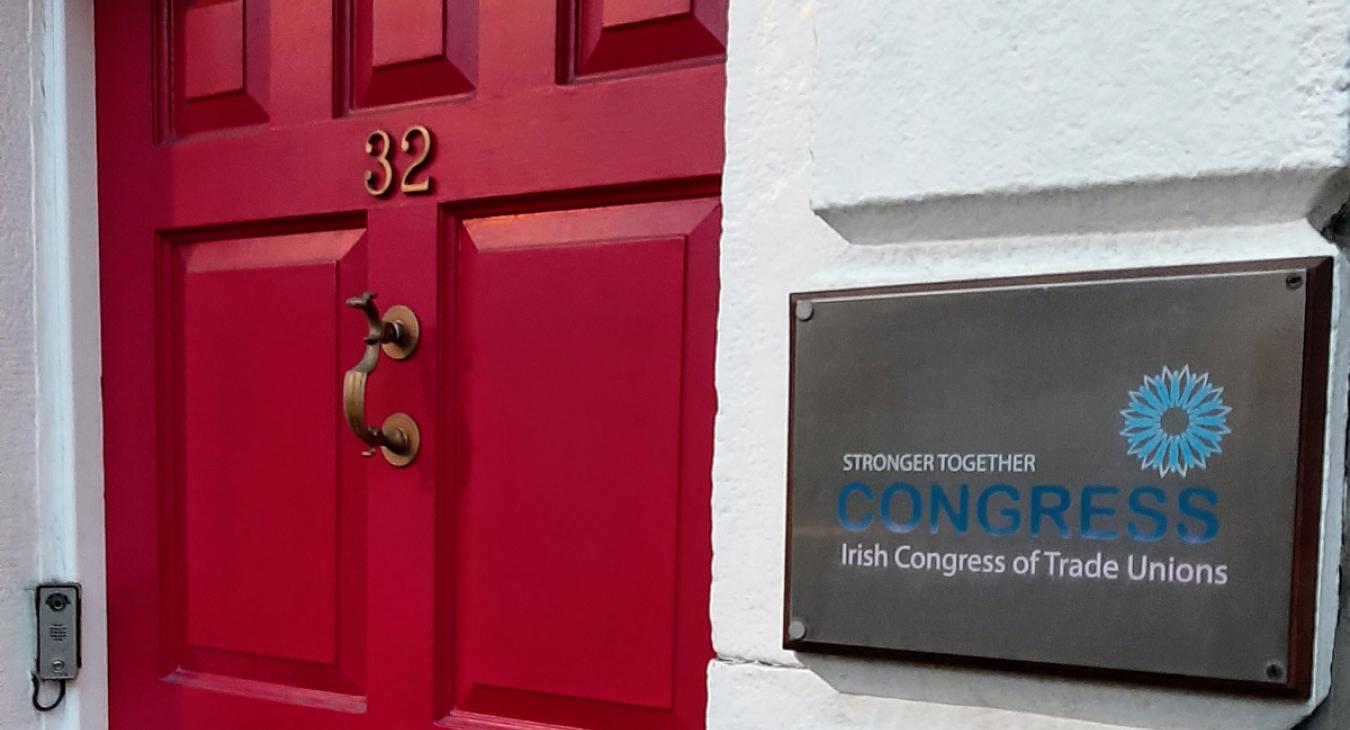
The 31st of January is the hundredth anniversary of the Mallow shootings, where four railway workers were killed by the RIC. Others were wounded, and some, who didn't retire until the nineteen sixties were on "light duties" as they still carried bullets in their bodies.
The behaviour of the police was placed front and centre of British politics as the men killed were union members, and the unions concerned, ASLEF and the NUR made an issue of it.
The national union of railwaymen (whose general secretary JH Thomas was an MP) commissioned an English historian, Barbara Hammond to write a report on the shootings. Because the NUR was based in London they were free to publish it.
Publication in Ireland might have fallen foul of military censorship, of the prosecution of editors by the Dublin Castle Authorities, or by parties of unidentified "armed men" visiting the printer.
The Hammond report is a unique historical document. It is however very rare. Congress is grateful to the Library of the Trade Union Congress in London for finding a copy, providing us with a scan, and securing copyright permission. It makes fascinating if grim reading on the Ireland of a century ago.
On the night of 31 January, 1921 RIC District Inspector King was out walking with his wife when they were fired on by an IRA ambush party shooting from the south end of Mallow station. Mrs Alice King was hit and died shortly afterwards. The RIC raided the station and rounded up the staff who were on duty. They were taken to the barracks under police escort with their hands over their heads. They were then told to run for their lives. They were then fired upon and most were wounded while three were shot dead. They were:
- Denis Bennett. a seventeen-year-old locomotive cleaner.
- Patrick Devitt, a signalman and father of eight.
- Daniel Mullane, a twenty-three-year-old fireman who, having escaped himself went back to assist a wounded colleague. Mullane received three bullet wounds through the hips and died a few days later.
Sixty eight-year-old signalmen Joseph Greensmyth was thrown down the twenty-foot stairs leading to the North signal cabin died the following June.
The men were members of the Associated Society of Locomotive Engineers and Firemen and the National Union of Railwaymen, both of which were based in London. The unions reacted strongly, with ASLEF threatening a strike throughout Great Britain. J. H. Thomas MP, NUR General Secretary (and a privy councillor) raised the matter in the House of Commons, causing outrage, when Hamar Greenwood, Chief Secretary for Ireland was greeted with the jibe of "here, comes the assassin" as he entered the Commons.
The NUR secured access for their lawyer to the military inquiry into the affair. The chairman of this enquiry, Brigadier-General H.R. Cumming, was killed in an IRA ambush on 5 March 1921, and another officer finalised the report, which was condemned in Ireland as a whitewash. However, due to the presence of T. Healy KC representing the NUR and ASLEF, the report was probably a more thorough enquiry into civilian deaths than generally occurred in Ireland at that time. The Mallow deaths had propelled the behaviour of the Crown forces to the centre of British politics.
Three documents give an account of the events at Mallow.
The first is a two-page report by the local manager. It was written the following day and is incomplete. Note how it reports on how the train service was got moving again, and the pointed reference to the looting of alcohol during the raid.

